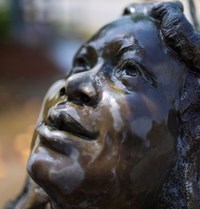- Lesson Plan (426)
- Field Trips (42)
- Distance Learning (38)
- Student Activities (21)
- Other Education Materials (8)
- Traveling Trunk (8)
- Primary Sources (3)
- Science Labs (2)
- Teacher Reference Materials (2)
- Field Schools & Institutes (1)
- Guest Speakers (1)
- Online Galleries (1)
- Teacher Workshops & Other Programs (1)
- Teacher-Ranger-Teacher (1)
- New Orleans Jazz National Historical Park (20)
- Homestead National Historical Park (16)
- National Park of American Samoa (13)
- Ulysses S Grant National Historic Site (12)
- Fort Scott National Historic Site (11)
- Friendship Hill National Historic Site (11)
- Olympic National Park (11)
- Acadia National Park (10)
- Cowpens National Battlefield (9)
- Show More ...
- Social Studies (400)
- Literacy and Language Arts (216)
- Science (174)
- Math (38)
Showing 540 results for chapter 8 ...
Perspectives After the Surrender at Appomattox CH
- Type: Lesson Plan
- Grade Levels: Middle School: Sixth Grade through Eighth Grade
This program will allow students to think about the different perspectives of those who lived through the Civil War, and how various viewpoints interpreted the events surrounding the Surrender Meeting at Appomattox. This program consists of several assignments designed to help students explore these differences through the stories of three people present at Appomattox Court House in 1865.
- Type: Lesson Plan
- Grade Levels: Middle School: Sixth Grade through Eighth Grade

Detroit, Michigan. Riot at the Sojourner Truth homes, a new U.S. federal housing project, caused by white neighbors' attempt to prevent Black tenants from moving in. American flag next to a sign that reads: "We want white tenants in our white community," directly opposite the housing project. Courtesy of Library of Congress.
- Type: Lesson Plan
- Grade Levels: Middle School: Sixth Grade through Eighth Grade

Young civil rights demonstrators speaking at a press conference at the Gaston Motel during the Children's Crusade in Birmingham, Alabama. Andrew Young (dressed in overalls) is standing behind them. Photo taken 5/8/1963. Copyright, Alabama Department of Archives and History. Donated by the Alabama Media Group, http://www.alabamamediagroup.com
- Type: Lesson Plan
- Grade Levels: Middle School: Sixth Grade through Eighth Grade
- Type: Lesson Plan
- Grade Levels: Middle School: Sixth Grade through Eighth Grade
- Type: Lesson Plan
- Grade Levels: Middle School: Sixth Grade through Eighth Grade

Bangladesh Air Force (BAF) paratroopers jump from a U.S. Air Force C-130 Hercules aircraft over Bangladesh during exercise Cope South 14 Nov. 10, 2013. Cope South is an annual bilateral aerial exercise designed to increase the combat readiness and interoperability of the U.S. Air Force and the BAF. Public domain photograph from defenseimagery.mil.
- Type: Lesson Plan
- Grade Levels: Middle School: Sixth Grade through Eighth Grade
Lesson 3 - PHOTO ANALYSIS
- Type: Lesson Plan
- Grade Levels: High School: Ninth Grade through Twelfth Grade

This lesson introduces students to the Civil Rights Movement’s direct-actions against segregation. In the 1960s, the New Orleans chapter of the Congress of Racial Equality participated in the Freedom Rides throughout the South. Students will examine a collection of photographs that includes four mug shots of C.O.R.E. activists and a Mississippi cotton field.
Lesson 6 - THE IMPORTANCE OF INTERGENERATIONAL DIALOGUE
- Type: Lesson Plan
- Grade Levels: High School: Ninth Grade through Twelfth Grade

When you take the time to sit down and learn from someone who is of a different age with different experiences, the teaching and the learning experiences go both ways. For this lesson, students will read Ray Lambert’s chapter where he discusses growing up before and after segregation with a young musician named Xavier Michel.
Lesson 7 - BECOMING A CULTURAL INVESTOR
- Type: Lesson Plan
- Grade Levels: High School: Ninth Grade through Twelfth Grade

In this unit, students will move beyond the days of the classic Civil Rights Movement and into contemporary times. Reading Jerome Smith’s chapter in Talk That Music Talk, they will learn how Civil Rights and music were combined together in a youth organization in New Orleans called Tambourine and Fan. Using the concept of a “cultural investment,” students will then create a presentation about their own community.













